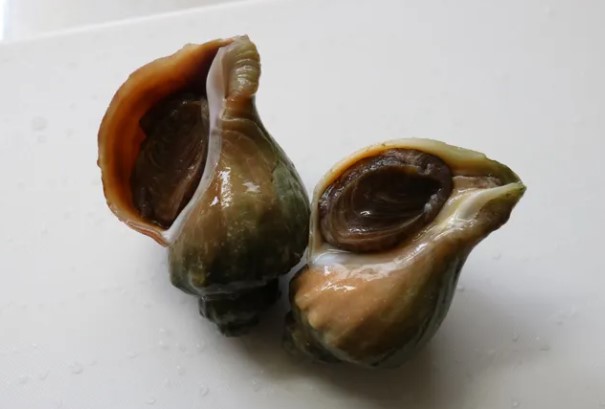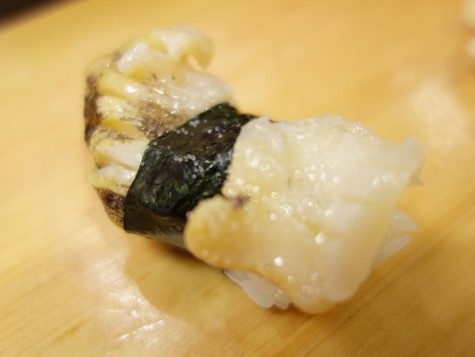
The appearance of Whelk (Himeezobora)
Common name: Whelk, Arthritic Neptune
Japanese name: Himeezobora (姫蝦夷法螺、青ツブ)
Taiwan common name: -
Chinese common name: -
Korean common name: 혹은
Russia common name: Нептунея артритическая
Scientific name: Neptunea (Barbitonia) arthritica (Bernardi,1857)
Nigiri sushi detail: Whelk (Himeezobora) Nigiri sushi

The appearance of Whelk (Himeezobora) nigiri
Feature:
Whelk (Himeezobora) is distributed from the Tohoku region and northwards, around Hokkaido and into the Bering Sea. It lives in shallow seas around 10m deep. It is spindle-shaped and brown. The shell is 7~9cm high. It is in season in summer.
The shellfish commonly referred to as Tsubugai is a general term for members of the family Ezobai, which are eaten, and there is no shellfish called Tsubu. Himeezobora is smaller than Ezobora, so it is cheaper, but it is known for its excellent flavor. Its salivary glands contain a poison called tetramine, which needs to be carefully removed. Himeezobora is particularly poisonous.
Himeezobora does not stick to vinegared rice at all, so sushi chefs in the Kanto region rarely use it. Compared to Awabi (Abalone) and Sazae (Turban shell), the flesh is much softer, with a moderate bite, and has a subtle umami and sweetness. It has a slightly plain taste and can be used in a variety of dishes. Tsubuyaki is particularly suitable.